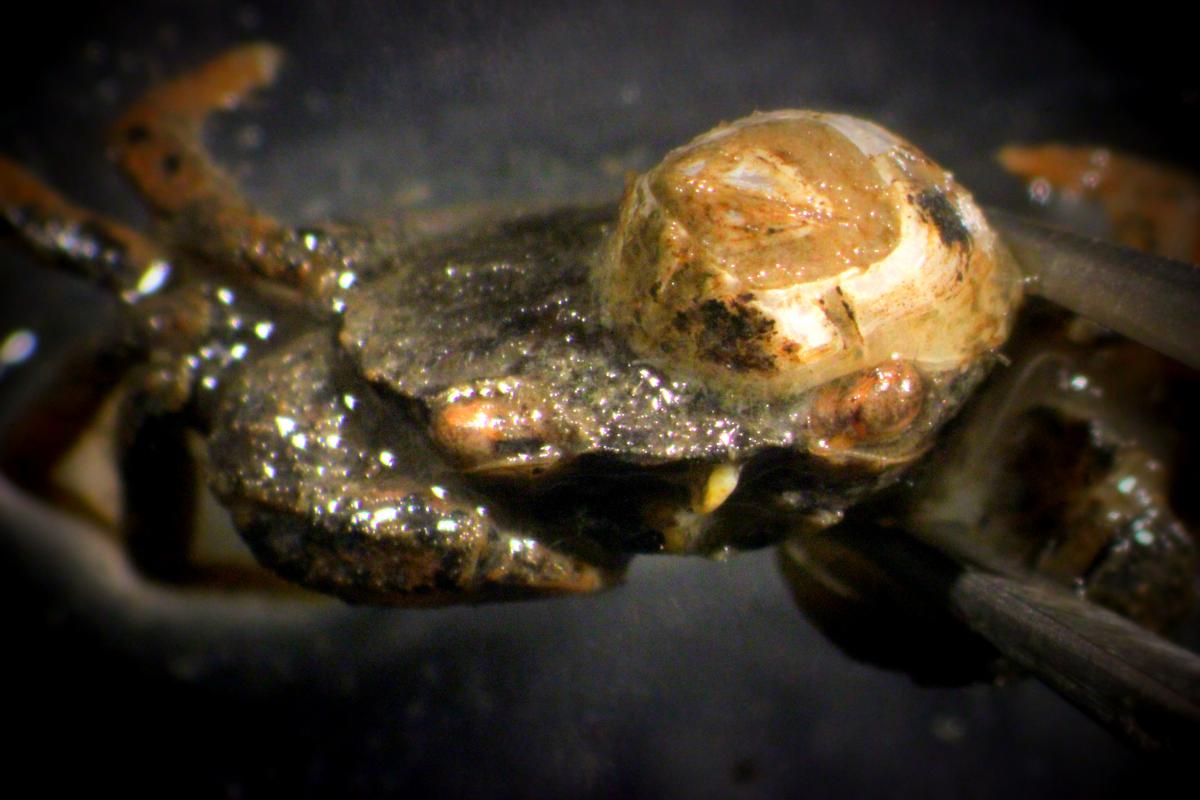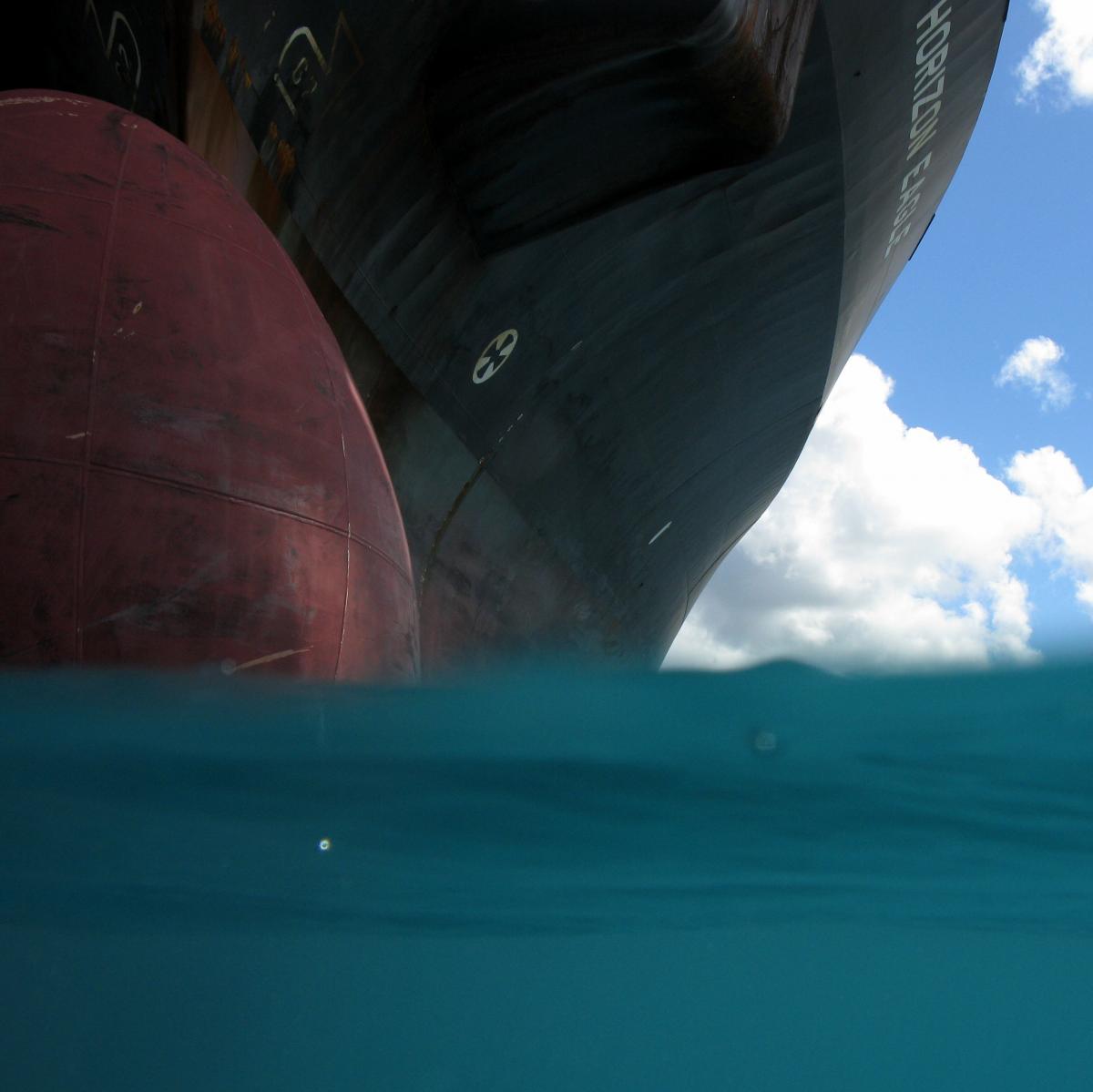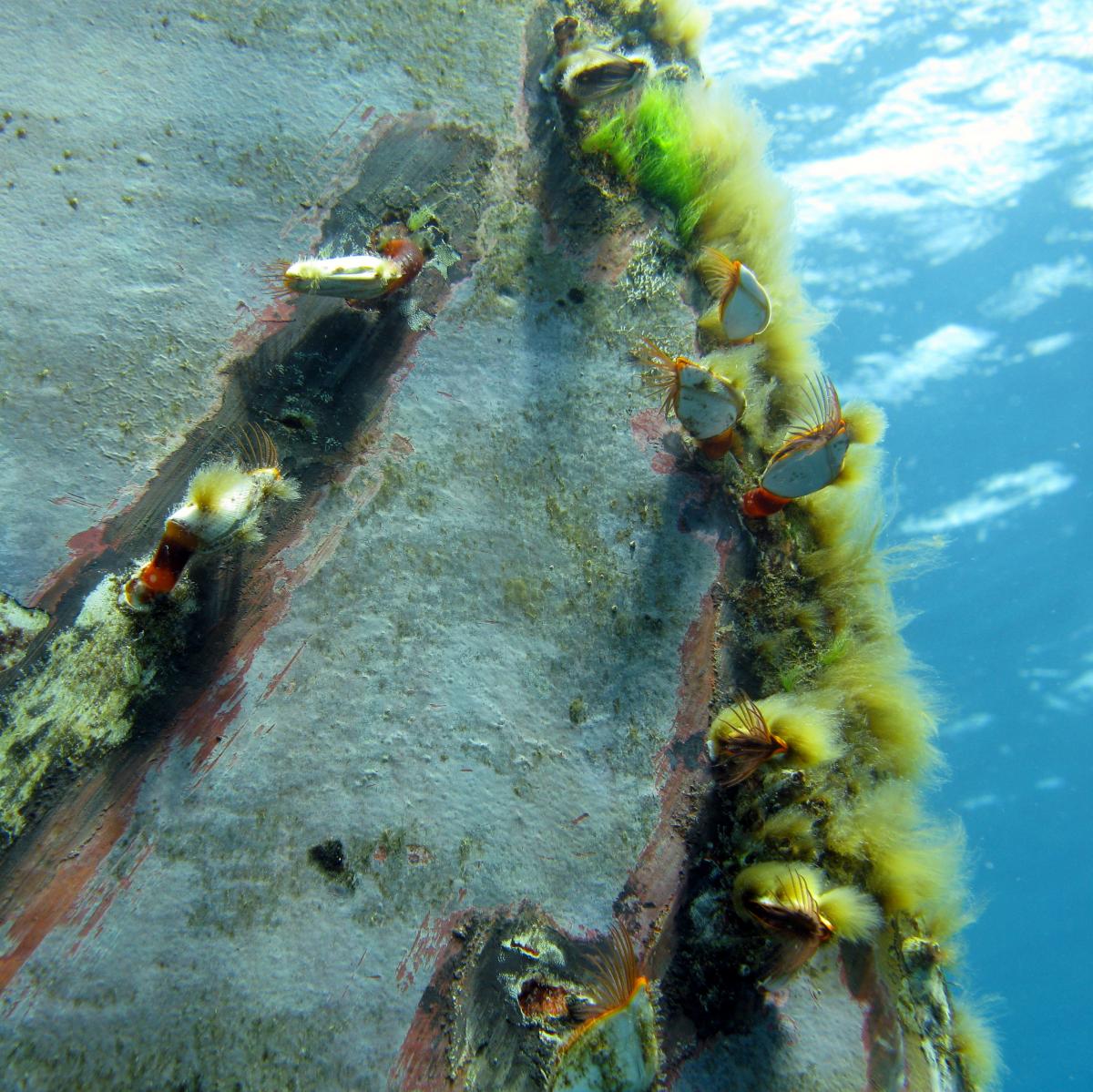
Adult barnacles are completely committed to the area they choose to settle on. They spend a little time feeling around while they make that choice, but once it’s made, they stick to it. Even when they discover they’ve settled on the head of a crab, it’s too late, they’ve glued themselves down and can’t relocate. With this apparent lack of mobility, it may be surprising to learn that barnacles as a group are world travelers. They travel the world by sea, either as plankton or attached to things that float, including the hull or small protected crevices below the water line of boats, barges and ships. If they are lucky, they survive long enough to reproduce and send their larvae out to colonize a new port.
Researchers from the Smithsonian Environmental Research Center’s (SERC) Marine Invasions Lab used barnacles to investigate the extent to which fouling species are dispersed outside of their normal ranges on commercial vessels. Through this study, published in Global Ecology and Biogeography, the researchers gained a better understanding of how commercial vessels may affect the global distribution of species.
Ships and their biofouling are a major force for marine invasions, but it’s difficult to predict future species introductions. Understanding how differences in the routes and geographical regions that ships travel through affects the ability of species to survive and establish in new areas will shed some light on this. Barnacles are a perfect organism for evaluating hull fouling because they are abundant, easy to detect, and have well-studied territory ranges.

In this study Drs. Gail Ashton (SERC), Ian Davidson (SERC), Jonathan Geller (Moss Landing Marine Laboratories, Invertebrate Zoology Lab), and Gregory Ruiz (SERC) collected samples of barnacles from fifteen commercial shipping vessels in the northern Pacific Ocean by removing them from the submerged surfaces of those ships. They then identified the species of barnacle using a combination of visual and genetic techniques. From these samples, they recorded twenty-two distinct species and several more that could not be fully identified. However, not all of the twenty-two species were native to the region where they were found. Based on the results of their study, the scientists determined that twelve out of the fifteen vessels transported barnacles outside of their normal ranges. The United States receives more than 100,000 commercial vessel arrivals per year, creating hundreds of thousands of opportunities for barnacles to arrive outside their normal range each year.
To understand why this work is important, we must first take a step back from barnacles to look at the bigger picture. Human populations are becoming more interconnected, with greater transport of goods and services around the world. What were once isolated, self-contained regions now experience a steady flow of traffic linking them together and providing new pathways for species dispersal. The distribution of a species depends on many factors, including the degree of connection between two locations with favorable conditions. Increasing transport between locations creates novel avenues to facilitate the spread of species to new ecosystems.
The arrival of an invasive species can upset the balance of an entire ecosystem. The new species uses up ecosystem resources, and yet may provide few resources itself. In many cases, this can result in shifts in population genetics, changes in species interactions, and alterations in ecosystem dynamics. Through studies like the one conducted by Dr. Ashton and her team, scientists can gain a better understanding of how species are distributed, helping them answer questions about the ways an invasive species affects an ecosystem.

Although this study did not investigate the ability of these barnacle species to establish in new areas, documented cases of new barnacle invasions appear frequently. Scientists also suspect that climate change will affect the ability of many species to establish in new locations. Ocean temperatures are projected to rise in the coming decades, opening up new territory for species that prefer warmer water. The results of this study indicate that there is a greater diversity of barnacle species in transport than past studies have found. Since only a subset of species could be identified, and it is likely that some species were missed entirely, the actual number could be much greater. These results, coupled with the warming of ocean waters, suggest that we may see even more new species introduced to coastal waters in the coming decade.
While some people will probably shrug their shoulders and think “big deal, they’re just barnacles” it is important to remember that if this diversity exists in the barnacles on ship hulls, it is likely that other non-native species are abundant as well. Remember that even the smallest change in an ecosystem can harm it and we know very little about the consequence of a major re-arrangement of the world’s biodiversity. Although to some it might seem like just a few insignificant barnacles one year, they may take over an entire coastline the next, making it uninhabitable for other living things.
The effects of invasive species reach far beyond what is typically thought of as the natural world. Although many people forget, we humans are a part of the natural world as well. We rely on it for everything from food and medicine to sources of income and asethetic beauty. Any time natural systems are impacted, these aspects of our lives are threatened as well. By altering the web of interactions that take place in an ecosystem, invasive species jeopardize our ability to access certain resources. Therefore, studies like this one are important for developing a deeper understanding of how species are moved so that management strategies can be implemented to minimize the number of introductions.
Reference
Ashton, Gail V., Davidson, I. C., Geller, J. and Ruiz, G. M. 2016. Disentangling the biogeography of ship biofouling: barnacles in the Northeast Pacific. Global Ecology and Biogeography, doi:10.1111/geb.12450



